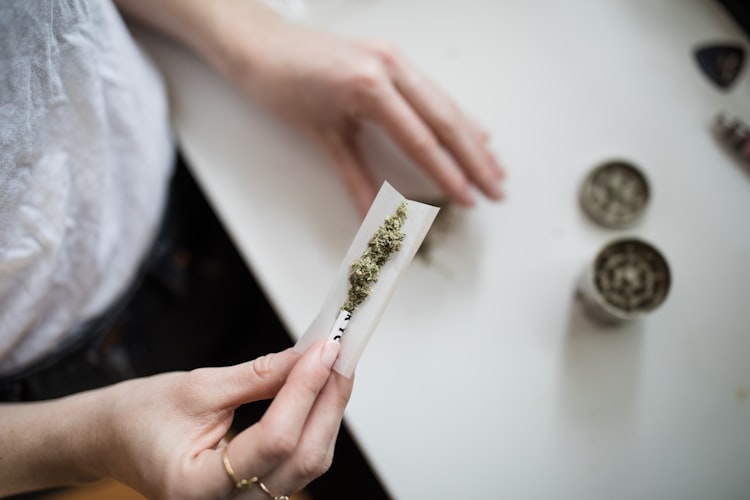In 2018, Colorado farmers had to destroy hundreds of acres of hemp because the plants exceeded a limit for the psychoactive compound responsible for the “high” in marijuana.
Colorado is among the states that require the top two inches of the plant be tested for THC, said Eric Steenstra, president of the advocacy group Vote Hemp.
Industry experts said the testing protocol doesn’t make sense because, in part, it isn’t representative of the THC content dispersed throughout the entire plant from which finished products are sourced.
“Whether or not a plant meets regulatory compliance literally matters what state you’re growing in,” said Chris Hudalla, Ph.D., founder and chief scientific officer of ProVerde Laboratories Inc., in Milford, Massachusetts, which provides analytical testing and consulting services in the marijuana and hemp industries.
Hudalla made those remarks during the Aug. 16 Hemp-CBD Supplement Congress in Denver hosted by the American Herbal Products Association (AHPA).
THC results, he explained, will depend on such variables as whether the top three or 12 inches of the plant are collected; and whether the top, middle and bottom of the plant are sampled and combined for testing.
Consider regulations in Vermont, where a spokesperson for the agency overseeing agriculture said no hemp had to be destroyed in 2018. The Vermont Agency of Agriculture requests THC testing for the top eight inches of a plant’s “side arm flower,” spokeswoman Stephanie Smith said.
Farmers in Vermont can salvage a crop if it exceeds a THC limit under certain conditions. “If the delta-9 THC concentration is greater than 0.3%, but a total theoretical THC concentration [is] 1% or less, the agency would allow the crop to transfer to a processor for removal of THC,” Smith said. “The compliant concentrate could be sold.”
Sunny Summers is cannabis policy coordinator for the Oregon Department of Agriculture. In an email, she said plant material that exceeds 0.3% delta-9 THC in preharvest testing must be destroyed.
In Oregon, the top eight inches of flowering tops are collected for testing, according to a document Summers forwarded. In 2018, less than 1% of preharvest tests failed, she said.
In a follow-up interview, Hudalla explained his critique of state procedures in which the top portion of the plant is tested for THC.
“We don’t use the top three inches of the plant to create products,” he said. “We use the whole plant to create products. So why are we taking the portion that has the highest amount of THC to evaluate if a plant is going to be within regulatory compliance?”
Brian Koontz, industrial hemp program manager with the Colorado Department of Agriculture, said 741 acres of hemp were destroyed in 2018 because they exceeded .39% THC.
“Our rule states that hemp greater than .3% and less than 1% can be destroyed or utilized on site in a manner approved of and verified by the Commissioner [of Agriculture],” Koontz explained via email.
But he added, “There has been no approved method to salvage hemp on site to date.”
Attorney Maureen West used to have Koontz’s job and worked at the Colorado Department of Agriculture for three years.
“I don’t think there’s any reason that farmers should be destroying crops,” West, now general counsel with Functional Remedies in Superior, Colorado, said at AHPA’s conference. “I think we need to find solutions. There are solutions.”
Asked to address criticism that Colorado officials should not be testing the top portion of the plant, Koontz cited rules defining industrial hemp as “a plant of the genus Cannabis and any part of the plant, whether growing or not, containing a delta-9 tetrahydrocannabinol (THC) concentration of no more than three-tenths of one percent (0.3%) on a dry weight basis.”
Hudalla described the 0.3% standard as “meaningless.”
“Whether or not your sample meets regulatory compliance has nothing to do with the amount of THC in your plant,” he said in the interview. “It has to do with how the state is going to collect the sample and test for it.
“It’s terribly frustrating,” the analytical chemist added. “I have farmers [who] are in states that have appropriate sampling plans, and they have no issues.”
Industry experts are hopeful USDA will promulgate sensible standards governing THC testing in its regulations for the production of hemp. USDA has drafted regulations that were sent to the White House’s Office of Management and Budget (OMB) for inter-agency review, a spokesperson for USDA said via email.
“It is USDA’s intention to have regulations in effect in time to accommodate the 2020 planting season,” the spokesperson said.
In an email, Steenstra of Vote Hemp said he has “advocated strongly” that USDA “use a composite plant approach, including parts of the entire plant for testing.”
During AHPA’s conference, an attorney based in Washington—Jessica Wasserman of Greenspoon Marder LLP—asked a USDA official about a national standard related to THC testing.
“Our goal is to provide a consistent, easy-to-follow regulatory framework around hemp production,” responded Bill Richmond, chief of USDA’s Hemp Program. “And I can’t speak to whether that means a hard prescriptive set of requirements for everybody at this stage, but our goal is to provide consistent standards that make sense for growers and for the industry, and don’t put farmers out of business. And that’s our intent.”
AC Braddock, chair of the National Cannabis Industry Association, said regulators don’t understand that they can mitigate THC content through extraction.
“There’s just so many things that are extremely detrimental to these businesses just because the regulators don’t understand what they’re dealing with, and they don’t look at other states as much as they should to see what this other state did,” said Braddock, CEO of Seattle-based Eden Labs, a manufacturer of extraction equipment, in an interview.
Eleanor Kuntz, Ph.D. is CEO of LeafWorks Inc., an herbal genetics company in Sebastopol, California. During the AHPA conference, she noted the same plants grown in different parts of the country “produce different chemicals,” and Kuntz explained factors such as temperature and water levels can change the plant’s chemistry.
“The chemistry is something that’s going to dictate whether your plants are legal or not, or compliant,” she said in a follow-up interview. “That’s a big deal.”
Kuntz described THC policies as “silly.” If THC is going to be regulated, she added, “we need to have a flexible way of regulating, and you need to allow farmers a way to remediate their crops.”
Hollis Glenn is director of the Division of Inspection and Consumer Services with the Colorado Department of Agriculture, and he is among those leading a groundbreaking hemp supply chain initiative known as CHAMP (Colorado Hemp Advancement & Management Plan).
Glenn said he couldn’t respond to criticism over Colorado’s THC testing procedures because it’s not his program. However, he suggested stakeholders in CHAMP are discussing such issues. In fact, stakeholders in the CHAMP initiative have broken out into eight working groups, including a testing group.
“This is a collaborative stakeholder process, so we want to hear from all those opinions,” Glenn said in an interview. “We want to engage in CSU [Colorado State University] and their outside experts to do their research to figure out … what is the standard across the country.”
Industry sources suggested farming is hard enough without unnecessary impediments from regulators.
“I know one farmer in Arizona who spent US$300,000 buying hemp young plants, and every one of them died,” said Josh Schneider, principal of Cultivaris North America LLC, a global horticultural company, during AHPA’s conference. “In my estimation, 50% of the farmers who plant hemp this year will lose their entire crop, and that’s probably a low number.”






